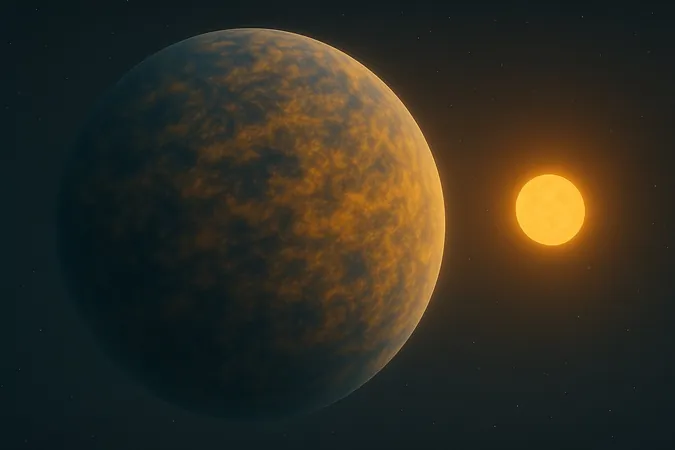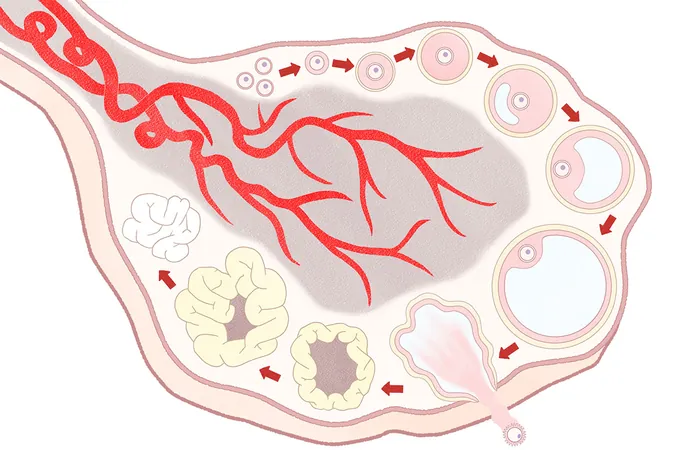
Unlocking the Secrets of 'Steam Worlds': A Revolutionary Model for Life Beyond Our Solar System
2025-08-25
Author: Jia
The Quest for Life in the Cosmos
Imagine navigating a boundless desert in search of a life-sustaining oasis: that's the reality for astrobiologists hunting for extraterrestrial life. Their research suggests that the most promising environments outside our solar system are found in what scientists call 'sub-Neptunes'—planets boasting water-rich interiors but situated far closer to their stars than Earth is to the sun.
Steam Worlds: The New Frontier
These sub-Neptunes are too scorching to host liquid water on their surfaces; instead, they harbor thick steam atmospheres above layers of exotic water that exists in neither gas nor liquid forms. Predicting the existence of these so-called 'steam worlds' two decades ago has sparked significant scientific interest regarding their structures and evolution.
Dr. Artem Aguichine, a postdoctoral researcher from UC Santa Cruz, leads a groundbreaking effort to model these mysterious planets. "Understanding how the most commonly observed planets form allows us to narrow our focus on rarer exoplanets that could one day support life," Aguichine stated.
A Game-Changing Discovery with Webb
Significantly, for the first time ever, the James Webb Space Telescope (JWST) has confirmed steam in several sub-Neptunes. As more observations are anticipated, enhanced models become critical in connecting surface recognition with internal composition.
Beyond Ice: Distinct Characteristics of Sub-Neptunes
Historically, models for studying sub-Neptunes stemmed from examinations of icy moons like Europa and Enceladus. However, these smaller, icy worlds differ greatly from sub-Neptunes, which can be up to 100 times heavier and orbit much closer to their stars. This unique proximity leads to thick steam atmospheres rather than icy crusts and oceans.
Researchers describe the intriguing state of 'supercritical water'—a complex phase that combines properties of both gas and liquid, challenging traditional models. Under extreme conditions, water may transition into 'superionic ice,' where hydrogen ions shift freely within an oxygen lattice, a phenomenon thought to exist deep within gas giants like Uranus and Neptune.
The Promise of Planetary Evolution Studies
Understanding how water transitions across sub-Neptunes is paramount for comprehending planetary formation. Aguichine highlighted water's myriad properties that facilitate the emergence of life, noting that it serves as a chemical acid and base, dissolves essential compounds, and forms hydrogen bonds.
Looking to the Future of Astrobiology
Aguichine's model emphasizes not merely static snapshots but the dynamic evolution of sub-Neptunes over millennia. This evolutionary perspective is crucial because a planet’s characteristics can shift dramatically over time.
These insights will undergo validation through ongoing JWST observations and future missions, such as the European Space Agency's PLATO, aimed at identifying Earth-like planets in habitable zones. "PLATO will evaluate our model's accuracy and guide future refinements, bridging our curiosity with the search for life beyond Earth," Aguichine explained.


 Brasil (PT)
Brasil (PT)
 Canada (EN)
Canada (EN)
 Chile (ES)
Chile (ES)
 Česko (CS)
Česko (CS)
 대한민국 (KO)
대한민국 (KO)
 España (ES)
España (ES)
 France (FR)
France (FR)
 Hong Kong (EN)
Hong Kong (EN)
 Italia (IT)
Italia (IT)
 日本 (JA)
日本 (JA)
 Magyarország (HU)
Magyarország (HU)
 Norge (NO)
Norge (NO)
 Polska (PL)
Polska (PL)
 Schweiz (DE)
Schweiz (DE)
 Singapore (EN)
Singapore (EN)
 Sverige (SV)
Sverige (SV)
 Suomi (FI)
Suomi (FI)
 Türkiye (TR)
Türkiye (TR)
 الإمارات العربية المتحدة (AR)
الإمارات العربية المتحدة (AR)